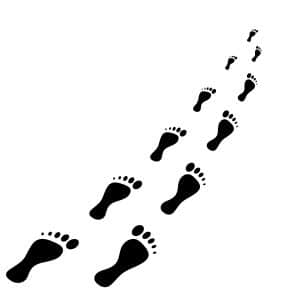
With many commuters choosing to swap their cars and public transport for cycling, it doesn’t come without risk.
With more cyclists on the road, many of whom may be new to doing so, we’re anticipating more cycling injuries at London Bridge Orthopaedics, especially in the coming months. So, what are the common types of injuries have we seen previously and what can you do to avoid them?
Back Pain
All that leaning over the handle bars for prolonged periods along with ill-fitting bikes takes its toll on your back, especially the lower half. Despite the majority of your body weight being supported by your upper-half, the constant position of cycling can cause nerve compression or sciatica.
To avoid this, ensure that your bike is well-fitted for your body height. A bicycle sales person or mechanic should be able to advise and adjust the bike for you.
Broken Bones
Cycling in the city is a lot more dangerous compared to cycling in the country due to the vastly increased amount of traffic. These injuries are caused either by being directly hit by a vehicle, colliding with a vehicle indirectly or braking hard to avoid a collision that results in the rider going over the handlebars. This means that your clavicle (collar bone) is the first to break. If a broken bone does occur, it requires immediate medical attention.
If you are about to have an accident, it is advised to ignore your gut instinct to let go of the handlebars and use your hands to cushion the fall. This will only result in your hands and collarbone taking the brunt, compared with the rest of your body if you hold onto the handlebars.
Patellofemoral Pain Syndrome
In layman’s terms, this is known as the overuse of the knee joint and causes pain and discomfort behind the kneecap. Because you are using your knees like a piston in a car, the bike needs to have a smooth rolling transition. If you’re moving your knees in an abnormal way, it can wear the surface of the kneecap. Continued doing so starts to produce the symptoms of an overuse injury.
To avoid this, ensure that your bike’s saddle is at the correct height for your body and that the position is leaning forward. Also, ensure that the pedals are working properly – if the pedals don’t rotate and prevent the foot rolling forward, it can cause an overuse injury.
Achilles Tendinopathy
The Achilles tendon may be the strongest but it doesn’t mean it can’t be damaged. Ruptures are common in cyclists who have put too much pressure on this tendon, either due to starting in the wrong gear or overdoing it on an incline.
Like many of the other treatments, having a correct-fitting bike will help. A high saddle usually means the calf has to stretch further which increases the likelihood of a rupture.
If you have experienced any of these injuries and wish to discuss with us treatment options, call London Bridge Orthopaedics on 020 7692 0675 or make an appointment.









